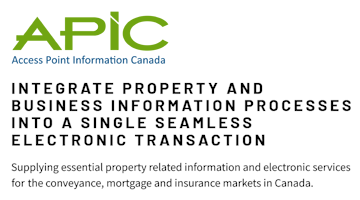Living Wage Policies in the Supply Chain: It’s Not a Zero-Sum Game
by Larry Berglund, SCMP, MBA, FSCMA
Presentations Plus Training & Consulting Inc.
“If we pay contractors who work for our municipality a living wage, it will cost the taxpayers more money.” This is an urban myth.
What is a living wage?
According to the Canadian Living Wage Framework (CLWF), the hourly living wage rate is based on the cost at which a household can meet its expenses once government transfers have been added and government deductions from wages and taxes have been deducted.
A living wage is defined using several criteria including:
- A healthy family of two adults and two children
- One child in full-time daycare; one in before- and after-school care
- The hours worked between the two parents is 35–40 hours per week
- One parent taking evening courses to improve their employment opportunities
- Groceries
- Rent
- Transit passes
A living wage excludes:
- Credit card, loan, or other debt obligations
- Retirement savings
- Owning a home
- Saving for the children’s future education
- Cost of elder care
AND excludes:
- Any costs “beyond the minimal required for recreational, entertainment or holidays”
- Any costs “beyond the minimal for emergency or hard times”
Canadian municipalities that have introduced the living wage policy having varying rates according to the cost of living in the various locales.
Table 1
Sample Living Wage Rates by Province and Capital City – per CLWF 2017
|
Province |
General Minimum Hourly Wage |
Hourly Living Wage by Capital City |
|
Alberta |
$13.60 |
$17.36 |
|
BC |
$11.85 |
$20.01 |
|
Manitoba |
$11.00 |
$14.07 |
|
Ontario |
$11.40 |
$18.52 |
|
Nova Scotia |
$10.85 |
$19.17 |
There are approximately 65 Living Wage Communities in Canada – and growing. There are hundreds of private sector employers which participate in living wage programs. Why?
It makes good business sense to do so. It’s argued that raising any wage rate increases production costs and the price of selling those goods must therefore increase and your competitors will eat your lunch: higher wages lead to layoffs. But the research shows otherwise. UBC economics professor David Green says that while the latter may apply to teenagers working part time, once you get over the 20-year old age limit employment isn’t really affected. The higher wages contribute to employee job satisfaction and provide those workers with greater economic stability. Every employer faces an affordability factor; however, higher wages do support staff attraction and retention. This leads to lowering the costs associated with hiring and training.
Families receiving a living wage stay within their communities and support local products and services through the redistribution of revenues. These individuals also see an improvement in their self-esteem and in general health – less sick time and medical visits – which in turn saves social costs. Living wage earners, while still considered as lower-income earners, spend more of their increase on essential needs when they receive a higher wage. All the evidence shows that minimum wages, certainly in urban areas, do not meet the cost of living.
Innovation within a living wage business philosophy also considers access to professional development courses, access to in-training staff, or no-cost services for community partners. These ideas can be quantified into a living wage calculation.
Living wage organizations:
The City of New Westminster was the first city to implement a living wage policy for its contractors. In 2011, the city enacted an ordinance for all its contractors to be paid a living wage rate. The living wage criteria is a part of their competitive bid process and is closely monitored for compliance. Living wage rates are adjusted where a contractor is paying some form of economic benefits to its employees. Living wage rates are adjusted annually.
Vancity credit union reviewed its contracts with approximately 1200 contractors across 45 industry sectors. They targeted strategic annual contracts over $250,000 and contracts that typically involved lower wage earners where contracts had lower annual spending thresholds. The latter included personnel agencies, janitorial services, catering, and security services. The financial cost to the bottom line for Vancity to implement its living wage policy was about 1% of its budget. Vancity is one of Canada’s largest living wage employers.
City of Vancouver
In 2017, the City of Vancouver implemented its Living Wage policy aimed at contracts $250,000 per year for ongoing service requirements. The minimum number of hours for these contracts is 120 hours per year per contract. Social enterprises are exempt from their living wage policy.
Living wage criticisms:
Living wage programs are not without their detractors. It is relatively easy to assess the difference in out-of-pocket costs between free market hourly rates, minimum wage, and living wage rates. It appears that the taxpayers – or members of a financial cooperative, for example – are absorbing the difference and do not enjoy a corresponding benefit.
Arguably from a total cost of ownership perspective, it may be more difficult to measure the social benefits between these three wage rates. Putting a cost to building a strong community is as difficult as placing a price tag on improved performance, better employee morale, improved customer service, improved health rates, increased self-esteem, reduced rates of absenteeism, increased staff retention rates, or increased support for local goods and services.
Bottom line – building a healthy and wealthy community is being done by private and public sector organizations through the living wage programs across Canada.
Thanks to Maya Maute, SCMP, Director, Procurement & Contract Management, Vancity credit union for her contributions to this article.
Larry has been in the supply chain management field as an author, manager, business trainer, academia, and consultant for many years. Larry has worked in both the private and public sectors. Recently he has been co-facilitating NECI eSeminars, classroom sessions, and online modules. His new book, Good Planets are Hard to Buy is now available on Amazon.com
Readers are cautioned not to rely upon this article as legal advice nor as an exhaustive discussion of the topic or case. For any particular legal problem, seek advice directly from your lawyer or in-house counsel. All dates, contact information and website addresses were current at the time of original publication
National Education Consulting Inc.
Phone: (250) 370-0041 Toll Free: (888) 990-7267

.jpg)




